- Destinations
- Travel Styles
- About Us
- Contacts
- Destinations
- Travel Styles
- About Us
You’ve probably seen photos of the colorful and intriguing tuk-tuks navigating the busy streets of Thailand. But have you ever wondered why they're so popular in this Southeast Asian country or where the name "tuk-tuk" comes from? Let's explore the urban culture that makes tuk-tuks a vibrant part of Thailand’s streets, a country known for its golden pagodas and rich cultural traditions.
The tuk-tuk in Thailand is a three-wheeled vehicle often adorned with bright colors. It has a roof in the back to protect passengers from the sun or rain and usually accommodates 4 to 5 people. The name "tuk-tuk" comes from the sound of their engines, mimicking the "tuk-tuk" noise when running.
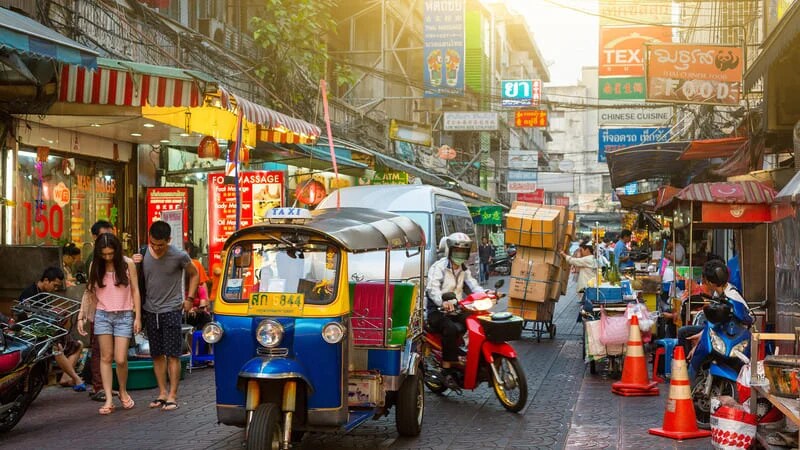
This onomatopoeia reflects the distinctive sound of the two-stroke engine used in many tuk-tuks. In Thai, the sound is typically transcribed with a soft initial consonant between a ''t'' and a ''d'', corresponding well to the noise these small vehicles make as they drive through the streets.
In fact, the tuk-tuk is the modern version of the Indian rickshaw or rickshaw. Also, as time passed, the tuk-tuk developed as it does now. In the 1930s until their popularization. Initially, Japan donated 20,000 used auto-rickshaws to several Southeast Asian countries, including Thailand. These vehicles became very popular, but when Japanese production ceased in the 1960s, tuk-tuk drivers around the world struggled to find spare parts.
.jpg)
In response, a Thai tuk-tuk driver named Jumrush Vhooonsri started a factory in his garage to modify these Japanese imports, crafting what would become the distinctive Thai tuk-tuk. These vehicles have since become iconic symbols of Thailand, often associated with tourism. Despite Bangkok''s modern transportation network, tuk-tuks remain a beloved part of Thai culture, representing a nostalgic echo of the country''s past and a vibrant aspect of its urban landscape. When we think of transport in Thailand, we think of Tuk Tuks.
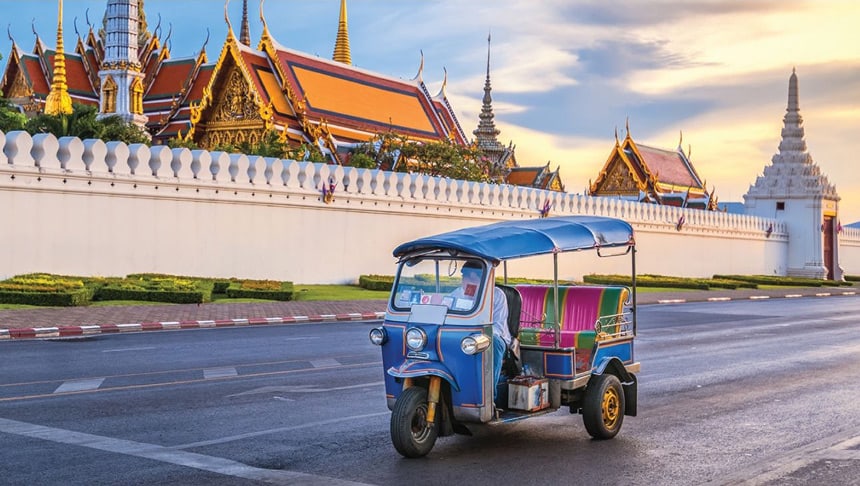
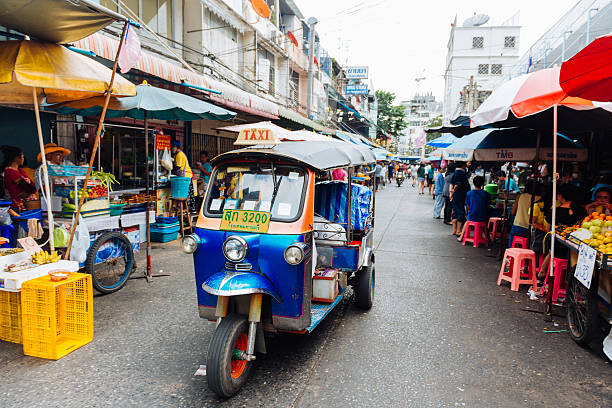
Tuk-tuks have long been a quintessential experience for tourists in Thailand. These colorful, open-air vehicles offer a thrilling connection to the vibrant street life, in stark contrast to the more conventional cars, subways, taxis, and motorcycles familiar to foreign visitors. Tourists often seek out tuk-tuks for a truly authentic ride, imbued with a unique Asian flair.
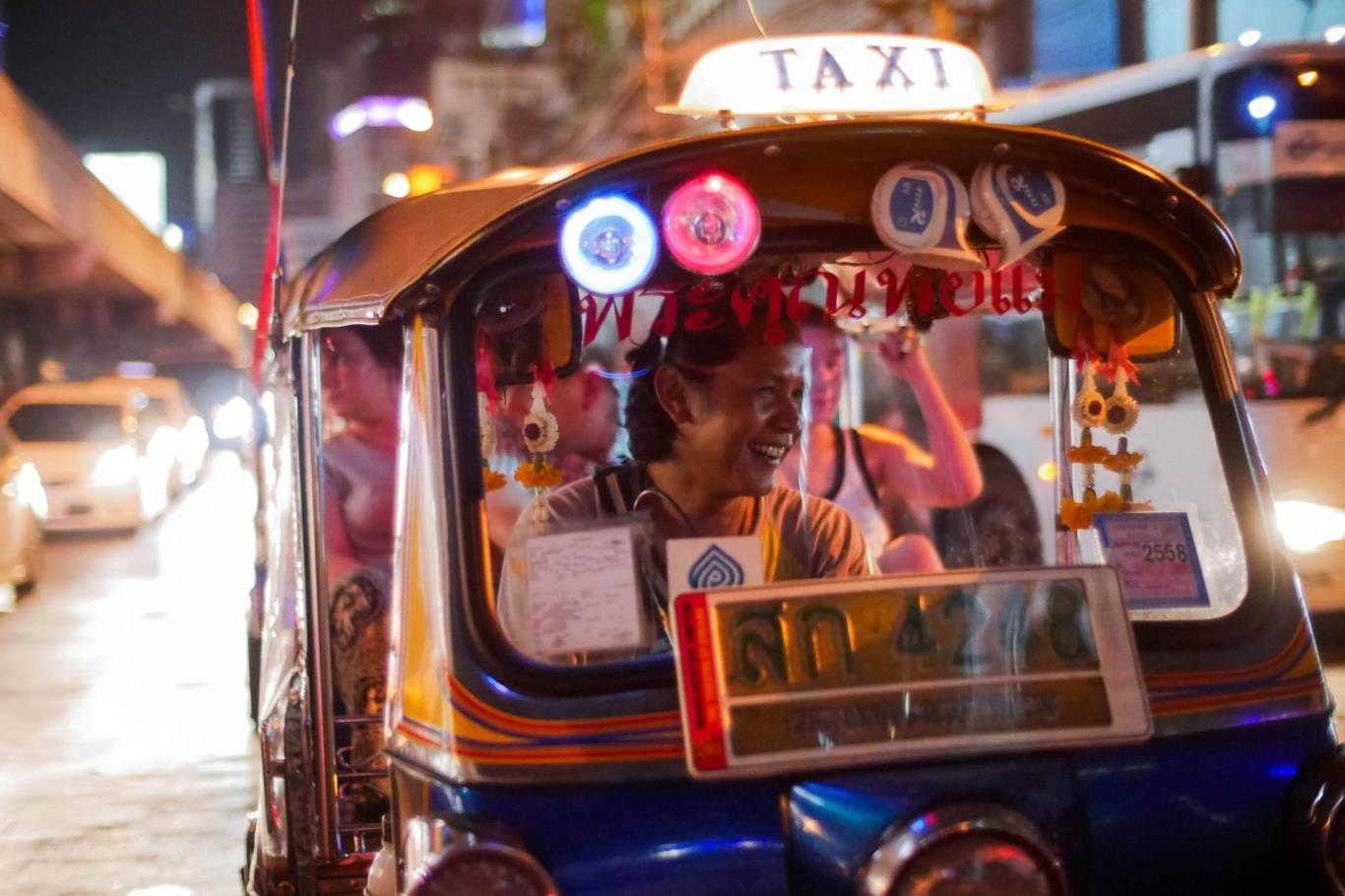
Even before they became a tourist attraction, tuk-tuks were a vital part of local life in Thailand. They are a practical solution for transporting goods—ranging from fruits and vegetables to markets—to carrying students and monks through the bustling streets. Tuk-tuks are particularly ubiquitous in Bangkok, symbolizing both utility and cultural heritage.
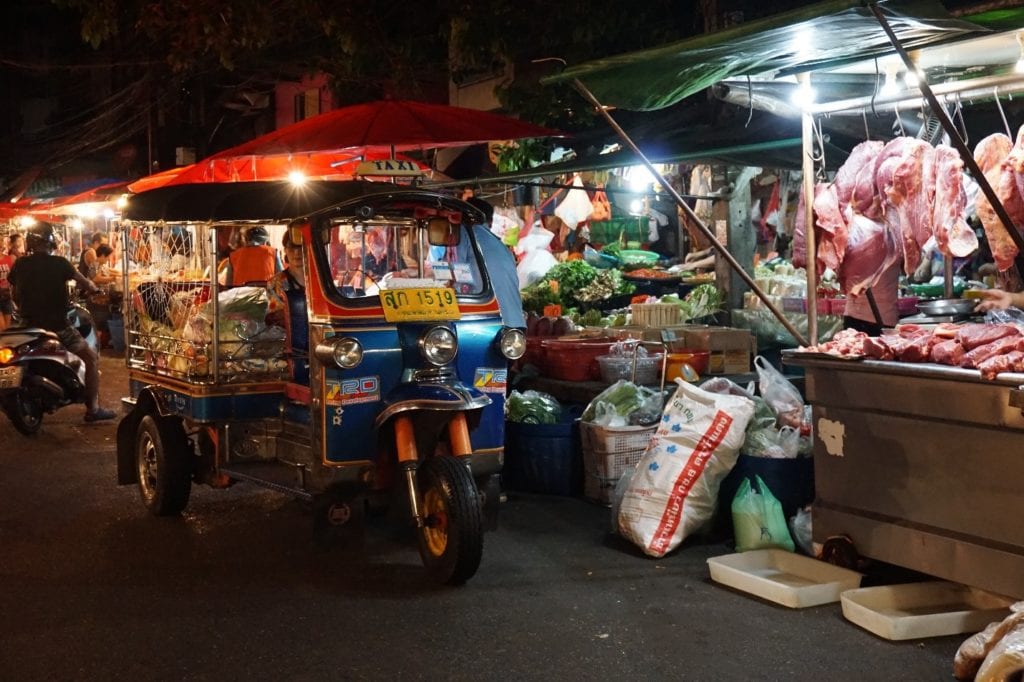
>>> 🌇🚤🌴 Explore North to South Thailand in 3 Weeks! Cities, jungles, beaches.
Tuk-tuks are a common sight on the streets of urban centers like Bangkok, as well as on islands such as Phuket, Krabi, and Koh Samui. Catching a ride in one is straightforward: these compact vehicles are everywhere, just waiting at street corners for a friendly wave.
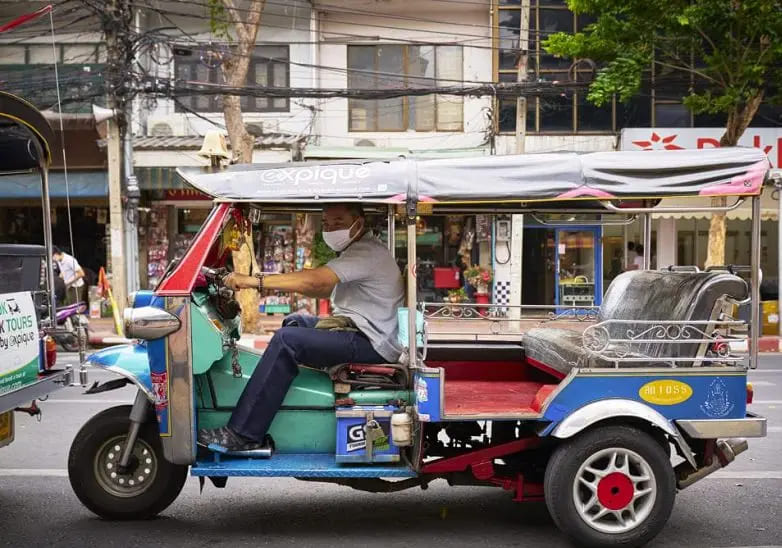
To hail one, simply stand on the sidewalk and signal to a driver. They''re typically eager to stop and pick you up. Alternatively, you can approach a driver directly to negotiate your fare. For those concerned about overpricing, the Grab app offers a reliable way to book tuk-tuks at standardized rates, much like Uber.
>>> 🏯🏄♂️🌅 Discover Thailand''s Highlights in 2 Weeks! Temples, waves, sunsets. 🍛🎭
To ensure a pleasant tuk-tuk experience, here are some practical tips to keep in mind. First, consider avoiding rush hour in Bangkok, where traffic jams are common from 7 am to 9 am and 4 pm to 7 pm. Traveling during these peak times can be exhausting due to the congestion, potentially slowing your journey and complicating fare negotiations.
Regarding rates, be cautious in tourist areas where prices tend to be higher. Unlike taxis, tuk-tuks do not have meters, so fares depend on your negotiation skills. Always agree on the price before boarding, and don’t shy away from haggling. If unsure about typical rates, seek advice from locals.
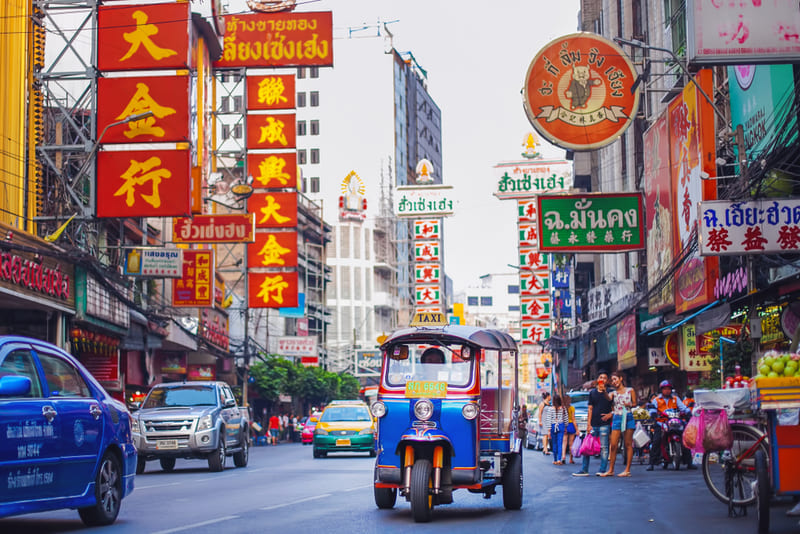
Also, be skeptical of offers for unusually cheap or free rides, particularly from strangers. Such deals might lead to unsolicited stops at shops or tourist spots where the driver earns a commission. If you prefer a direct route, it’s best to decline these offers politely.
All in all, taking a tuk-tuk in Thailand is an experience not to be missed, but it requires a little caution.
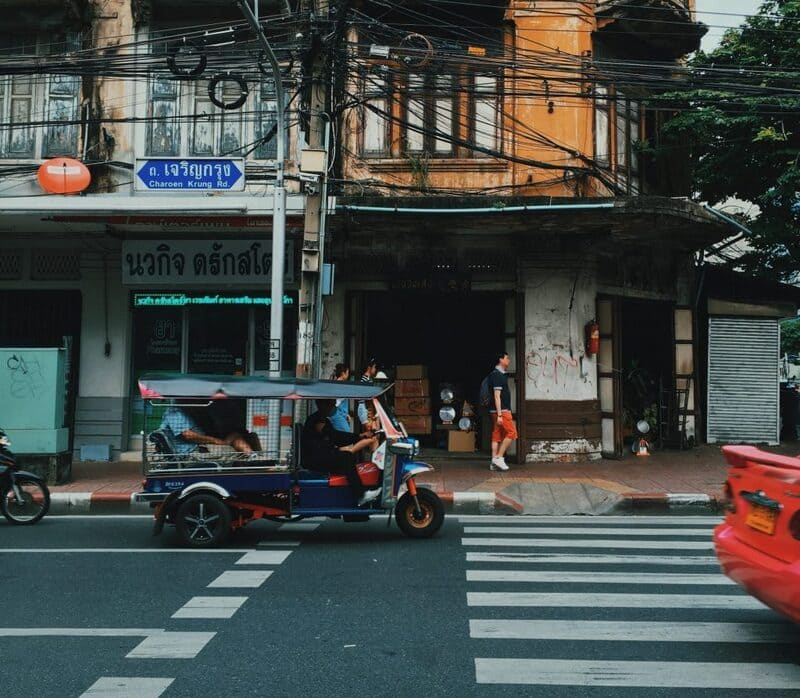
>>> The Ultimate Guide to a 2-Week Adventure in Thailand 2025
Several things affect how much a tuk-tuk ride in Bangkok will cost, but the main one is the price the driver decides to ask for. Unlike taxis, tuk-tuks do not run on meters.
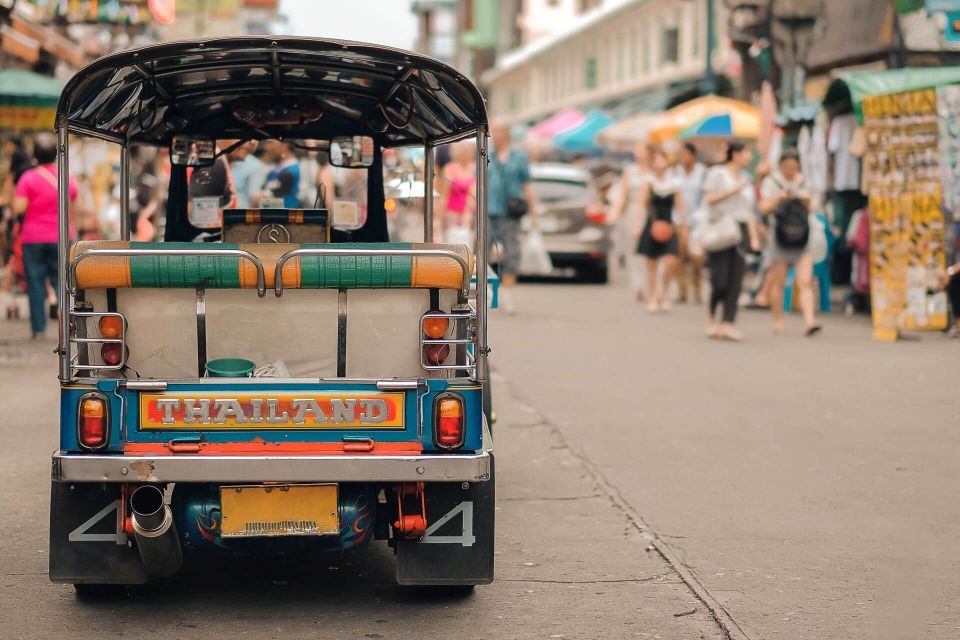
However, the price is often bargained for at the outset of the ride, and many travelers find that short jaunts within central Bangkok—say, from one side of the iconic Wat Pho temple to the other—will only cost them about 50 THB to 150 THB (or $1.50 to $4.50).
For the few times, they hire a tuk-tuk to cover greater distances, to travel during times of heavier traffic, or to head to locations outside the city core, travelers might find that the cost balloons up to 200-300 THB ($6 to $9) or even higher.
>>> Read More: How to Get Around in Thailand?
Thailand’s tuk-tuks are more than just a mode of transportation; they embody the essence of local culture and stand as iconic symbols of the country’s vibrant streets. Their distinctive name reflects decades of ingenuity in design and function.
For travelers, riding a tuk-tuk is not just a commute—it’s an immersive experience that connects them with the pulse of Thai life. However, to make the most of this unique adventure, it’s wise to take certain precautions.
By following a few practical tips, you can fully enjoy the unforgettable experience of traveling by tuk-tuk in Thailand.
>>> Read more:
>>> Every month, everything you need to know about Thailand
JANUARY | FEBRUARY | MARCH | APRIL | MAY | JUNE | JULY | AUGUST | SEPTEMBER | OCTOBER | NOVEMBER | DECEMBER
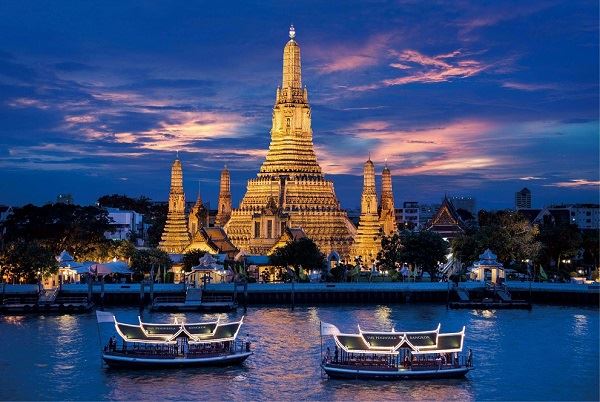


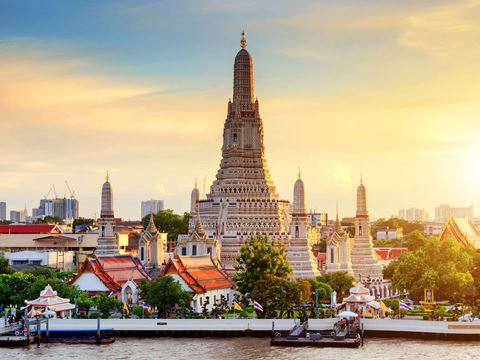 The Essentials
The Essentials Private Tour
Private Tour The Essentials
The Essentials The Essentials
The Essentials